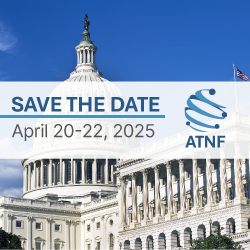At the Global Tobacco and Nicotine Forum (GTNF) in Brussels, industry leaders examined the shifting regulatory climate in the United States, where overlapping state and federal actions continue to shape — and complicate — the tobacco and nicotine marketplace. The session was moderated by Paige Magness, Senior Vice President of Regulatory Affairs at Altria Client Services, with insights from Beth Oliva, a partner at Fox Rothschild, Laura Leigh Oyler, the Vice President of Regulatory at Haypp Group, Valerie Briggs Solomon, the Vice President of Scientific and Public Health Affairs at Reynolds American, and Dr. Jessica Zdinak, the founder and Chief Research Officer at Applied Research and Analysis Company (ARAC).
Magness opened the panel, noting that “a change was inevitable” with the new U.S. administration, citing an encouraging shift toward addressing illicit markets. She commended the Tobacco Control Act’s intention but said, “It’s FDA’s implementation where things fall apart.”
Oyler highlighted the fragmented nature of the U.S. system: “Sometimes it’s hard to remember the U.S. isn’t one big monolith — it’s 50 states that can directly conflict with the federal government.” She stressed that effective youth prevention starts with adult behavior, adding, “The biggest predictor of youth use is whether their parents use. Help the kids by helping their parents make better decisions.”
Oliva described a growing disconnect between FDA oversight and state-level actions, noting California’s comprehensive flavor ban. “The FDA is the barrier to entry, the states are barriers to the shelf,” she said. “Today they are combining in ways never meant to happen.” Oliva argued that the FDA’s shifting authorization process and policy reversals have destabilized the marketplace, pushing consumers toward illicit products. “Unless we see a lot more authorizations for nicotine products, we’re going to see what happened with e-cigarettes all over again,” she warned. She urged the FDA to “partner with those tracking the data” and to “stop manipulating the industry and consumers in the process.”
Zdinak focused on the disconnect between regulation, consumer understanding, and behavioral science. “Congress is making laws without understanding the people they govern,” she said, pointing to misinformation about relative risk. She argued that variety and flavor choice drive switching and, therefore, public health gains. “If CTP can’t communicate quickly, the market will move ahead without them,” she cautioned, predicting “another wild west” scenario similar to what happened with the e-cigarette category.
Solomon criticized the FDA’s tendency to exaggerate youth-use trends while ignoring adult harm reduction. “FDA is calling things an epidemic that aren’t,” she said. “Scaring children away might be good, but scaring adults away from better options is counterproductive.” She underscored the importance of credible communication through trusted messengers: “[The nicotine industry is] not always trusted, so we have to equip those who are. Science will lead the way — if we let it.”
Overall, the panel agreed that while the U.S. has one of the world’s most comprehensive regulatory systems, its complexity and inconsistency risk stifling innovation and harming public health goals. The consensus was that greater collaboration, transparency, and scientific grounding are urgently needed to make the regulatory system work for both consumers and harm reduction.





